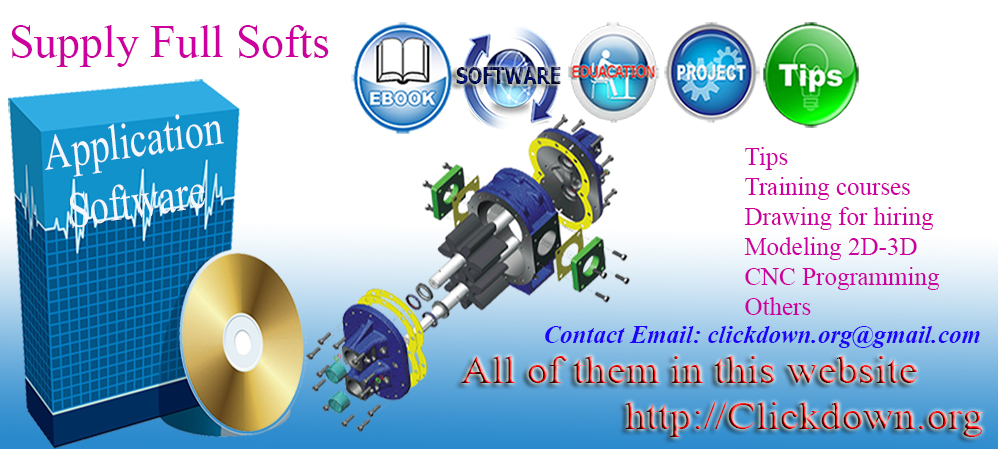Download Learn to Design Your Own Boards [Altium Designer] course
Link downlaod Learn to Design Your Own Boards training videos
Learn to Design Your Own Boards course for engineer
Learn to Design Your Own Boards [Altium Designer]
Duration: 14:34:24
Handout type: Video tutorial
English language
Description: Design a board in 15 hours. Step-by-Step tutorial based on Arduino project (Altium)
Description
Learning a basic board design is essential for everyone who would like to work
in electronics or who would like to design electronic boards or
products. Learning board design in the right software can open you door
into many companies, help you to get a well paid job and can be used to
design very complex and advanced boards.
Design a Real Board and Learn Essentials of Using Altium Designer
Draw your own schematic
Route your PCB and do layout
Generate documentation needed to manufacture your PCB
Altium Designer is a Powerful Software
During this course you will learn how to use Altium Designer software. Altium
Designer is a professional software used to design all kind of boards,
from very simple ones to motherboards or servers. It is one of the most
used software for electronic design. Learning Altium is useful for
everyone planning or already working in electronics.
Contents and Overview
You will start with Arduino Uno reference schematic. You will learn how to
re-draw the schematic, modify it, you will learn how to improve it and
how to do PCB layout. The course videos are step-by-step and even if you
are new in electronics or you have never used Altium Designer before,
by repeating these steps, you will design your own board. By the end of
this course, you will create all the necessary documents needed to
manufacture the board.
Within 15 hours you will learn how to:
Draw schematic, including tips for component selection and important circuits
Create components, draw schematic symbols and footprints
Place components into your PCB
Route PCB and useful tips about layout
Create 3D model of your board
Create board variants with different components fitted / not fitted
Create Bill of Material (BOM)
Create assembly drawings showing position of components on the board
Generate Gerbers, Pick and Place, Drill file and other files needed for manufacturing
Prepare professional documents needed to manufacture your PCB and assemble your board
Bring your board to life, flash firmware and run a simple LED Blinky example
For everyone interested, the manufacturing documents created during this
course can be used to build your board. Simply use PCB manufacturing
data to get your PCB, buy components from Digikey and solder them by
yourself.
Enjoy this course : )
What you’ll learn
After this course, you will design your own Arduino like board.
Requirements
You will need Altium Designer software. If you are a college / university student, ask Altium for a student license. In many countries the student license is free.
Who this course is for:
College / University students: During this course you will learn how to work in
Altium Designer. Altium is one of the most used software in companies
which are designing electronic boards or products. Knowing how to work
in Altium can give you an advantage when applying for a job. As a
college / university student, you may be able to get a free license of
Altium Designer.
Junior / Senior hardware design engineers: During this course you will go through
complete process of designing an electronic board. You will learn all
the steps exactly the way as they are done in a professional company.
After this course you will know everything essential to use Altium
Designer in your job. This course can be very useful when you are
starting with Altium Designer or when you are moving to Altium Designer
from a different CAD system.
Beginners, Hobbyists: If you build your own electronic circuits using wires or
breadboards and you have ever wanted to transfer your circuits into a
real board or real product, this course can help you. During this course
you will learn how you can design your own boards.
Content
Drawing Schematic and Creating Libraries
79 lectures, 7h 47m / 79 lectures, 7h 47m
Introduction
What will you learn during this course
Download Arduino Schematic and start a new project
Prepare to create ATMEGA328P component
Create ATMEGA328P – Schematic symbol
Create ATMEGA328P – Footprint
Prepare to create ATMEGA16U2 component
Create ATMEGA16U2 – Schematic symbol
Create ATMEGA16U2 – Footprint
How to update an existing component
Create 10 pin female header
Create 8 pin female header
Create 6 pin female header
Connect 10, 8, 6 pin headers
Create 100nF capacitor
About connecting power pins of microcontroller
Create 10uF capacitor
Create Ferrite Bead
Draw power connections
Create 1M resistor
Create 16MHz Crystal
Create 18pF Capacitor
Draw crystal connection and power for 16U2
Create ICSP header
Connect ICSP header
Placing net names
Using schematic filter and schematic inspector
Connecting the rest of the IO connector signals
Create 22 Ohm resistor
About connecting CLOCK, RX and TX
Create 1k Ohm resistor
Connect UART signals
Connecting ICSP1 header
Creating 2×2 male header
Connect 16U2 IO header
About RESET circuit
Creating BUTTON
Create 10k resistor
Creating DIODE
Create AND gate
Connecting RESET circuit
Draw rest of RESET connections
Creating 1×3 male header
Connecting JP1 jumper and 16U2 RESET circuit
Create 1×4 male header
Connecting JP3 jumper
Create Orange LED
Calculating LED resistor
Create 560 Ohm resistor
Create and connect Green Power LED
Connecting User LED
Create +3.3V LDO regulator
Connect +3.3V LDO regulator
About power selection circuit
Create 0R resistor
Draw power selection circuit, about unfitted components
Name some 16U2 nets and about pull up resistors
Create 100k resistor
Connecting 16U2 signals, GND pins, about UCAP
Create 1uF capacitor
Draw UCAP connection and name power & crystal nets
About USB connector + Creating USB connector schematic symbol
Creating USB connector footprint
Connecting USB – Part 1
Create Varistor
Connecting USB – Part 2
Creating 100uF capacitor
Create 2.2uH inductor
Connecting USB – Part 3
Add and connect User Button
Create and connect PADs
Create and add fiducials
Create and add mounting holes
Create and add DIP socket
Create and add LINK (jumper)
Finishing Schematic
6 lectures, 31m / 6 lectures, 31m
Annotating, checking and browsing schematics
Adding notes into schematics
Finishing schematic: About Pages, Title Block and Parameters
About components and BOM (Bill of Material)
Update Altium Designer settings
Importing Schematic into PCB
PCB Placement
12 lectures, 1h 17m / 12 lectures, 1h 17m
Change board shape, place mounting holes and main connectors
How to start placement, place 328P MCU and DIP socket
Change Altium settings, hide designators, setup grid, lock down components
About placement
Placement around 328P MCU
Placement around 16U2 MCU
Place components around USB connector
Placing headers, jumpers and LDO regulator
Placing buttons, 16U2 reset, LEDs
Placing remaining components
3D view of finished placement
About paper model
PCB layout
20 lectures, 3h 30m / 20 lectures, 3h 30m
Preparing for layout
Routing short connections
Routing power nets
Routing ground net
Checking if everything is connected
Current status and about layout procedure for more complex boards
Importing schematic changes into PCB
Drawing power planes (polygons)
Drawing ground planes
More polygons, improving power tracks and power planes
Improving layout Part 1
Improving layout Part 2
Improving layout Part 3
Improving silkscreen layer
Adding gold company logo
Adding assembly drawing layer
Creating a mechanical drawing layer
Adding manufacturing notes layer
Finishing PCB
Manufacturing documentation
14 lectures, 1h 14m / 14 lectures, 1h 14m
Create board variants
Start procedure of releasing your board documentation
Generate and check gerber files
Generating NC drill outputs and drawings
About stackup document
Generate mechanical drawing
Generate top view drawing
Generate BOMs
Generate pick and place file
About stencils
Generate 3D PDF and STEP file
Generate PDF schematic
Back up the project and what next …
Bringing your board to life
6 lectures, 16m / 5 lectures, 16m
How to start with software development
Programming 16U2 MCU
Programming 328P MCU
Reprogram 16U2 MCU
Testing your board
thank you
1 lecture, 1m / 1 lecture, 1m
Thank you very much for signing up for this course
For download this video training course (Learn to Design Your Own Boards) videos), please click to download sysmbol and complete your checkout to support a little bit to help my website is maintained. The download link will be appeared automatically after you complete your payment.

After you receive *.zip file, open it and open *.txt instruction’s file to see video for download instruction if you don’t know how to download.
All make sure you’ll get best services and we’ll help you any time when you get any problems. Don’t mind to contact admin: clickdown.org@gmail.com.
p/s: You also can request somethings which don’t have inside this website, we’ll try our best to them it for you.
Thank you.


![Learn to Design Your Own Boards [Altium Designer]](https://live.staticflickr.com/65535/52315858216_8fdc7a2162_o.png)